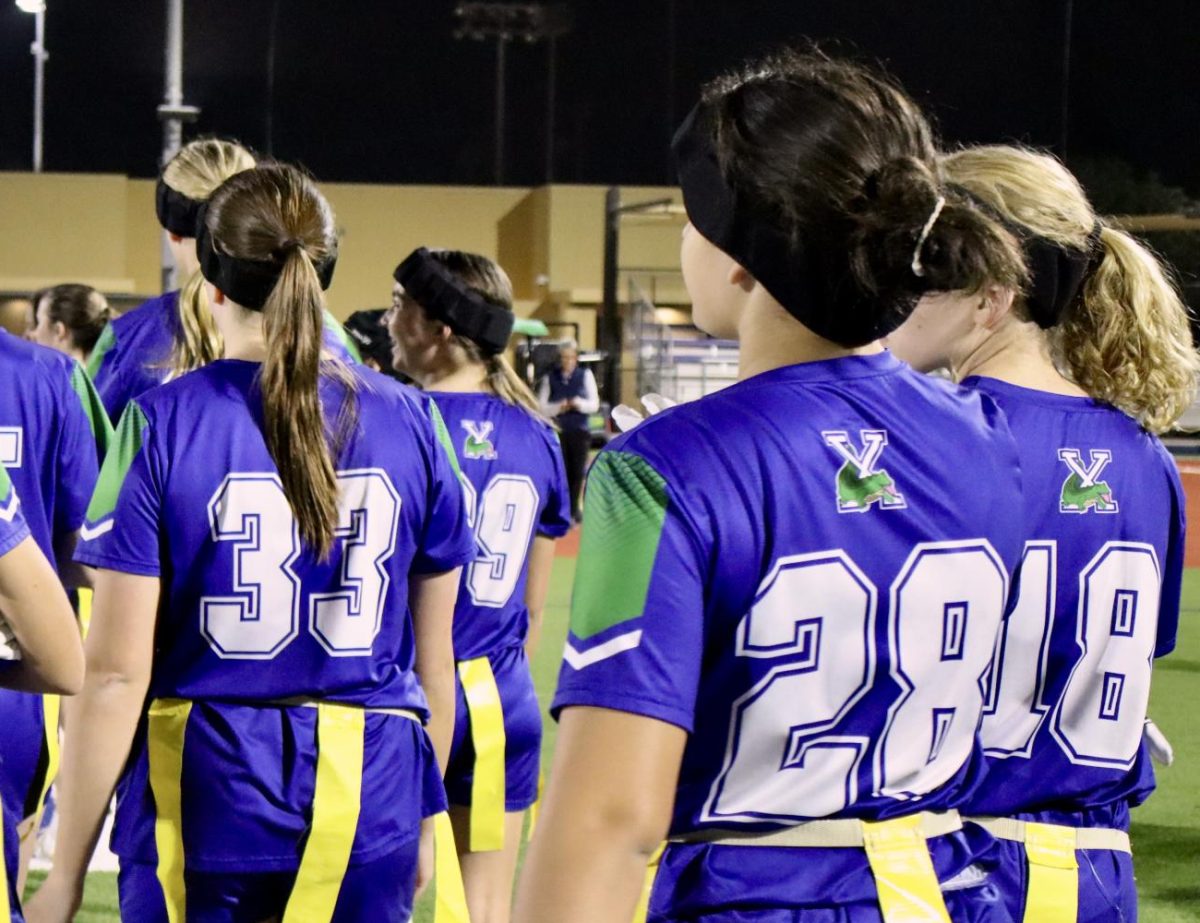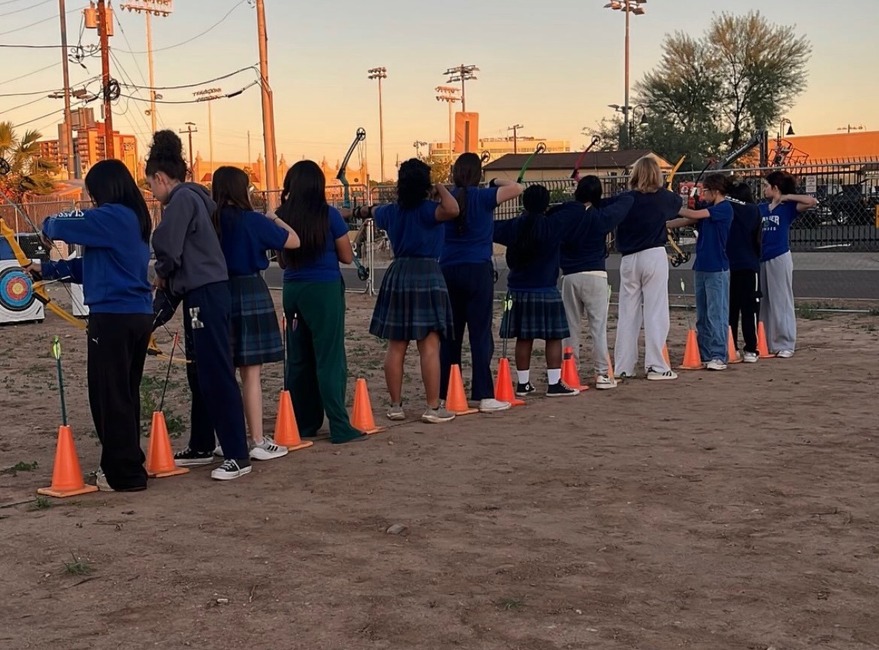The classic bow and arrow is an ancient concept that dates back 61,000 years. Originally, the bow and arrow’s purpose was to assist in hunting and in fighting battles, but over centuries it obtained a new use, a sport known as archery. Mohair, hemp, silk, various fibers, wood, leather, leaves, and feathers were all materials used to make bows throughout the ages and the shapes of bows depended on the culture. In the modern era bows are highly developed for competitions.
Archery appeared in the Olympic games in 1900, 1904, 1908 and 1920, but came to a halt for 52 years. It was reintroduced in 1972 and since then it has been a recurring sport at the Olympic games. National Archery in the Schools Program (NASP) started on March 3, 2002 in Kentucky with the goal of encouraging and expanding archery participation across the nation. Xavier introduced its first archery team in 2012 and the popularity and success of the sport increased every year.
The Xavier archery team competes in various tournaments throughout the valley during the year, that’s why it’s categorized as a multi-season sport. The two types of events the team competes in are the 3-D range and the bullseye range. “3-D is where the archers shoot not at a bullseye target, but at foam-rubber, life-sized animals of varying shapes and sizes, from as small as a turkey to as large as a ram,” said John Campo, an assistant coach. The bullseye range is where the archers shoot from 10 meters to 15 meters at a motionless target.
Throughout the past three years, Xavier’s team has been ranked in the top five for the bullseye range. The previous season was the first year Xavier ranked 1st for the 3-D range and the bullseye range in Arizona. At the Arizona NASP State Finals Bullseye and Arizona NASP State Finals 3-D, Xavier archery earned first place in both competitions.
“We want to continue to win championships as a team, not just with a few great individual archers,” said Campo. “One archer on the team can be first in the state, but that won’t qualify the team.”
It takes a team effort to win tournaments and achieve success throughout the season in archery even though it is an individual competition. Each person on the team has to focus on her own performance. “We work together by helping each other figure out what might be wrong with someone’s form or being there for our teammates during tournaments even if we aren’t shooting at the time,” said Olivia Fisko ‘25.
In order to put forth its fullest potential at the tournaments the archery team has a specific training regime that consists of weight training, band work, and practices three times a week. “You have to have the physical stamina to raise, hold, aim and draw that bow 32 times per match and when we go to a tournament, we shoot both bullseye and 3-D, so that’s 64 shots,” Campo said.
Not only is archery a sport that requires one to have a certain amount of physical strength, but also a certain amount of mental strength. “During practice each person on the archery team specifically works on whatever area is a challenge to her and it is up to the athlete to practice on her own time and her mental game,” said Fisko.
There are six qualified coaches on the staff for the archery team including Campo. Head coach Kelsey Wicketts, Scott Wagy, Ana Bhatti, Lauren Fisko and Ashley Lynch aid the archery team with their knowledge and constructive encouragement to improve and thrive the sport.
Wicketts and Bhatti are Xavier alumnae who wanted to contribute their knowledge and understanding of the sport to high school archers. “When I was a Xavier student, the school didn’t have an archery team, but they started one a few years after I had graduated,” said Wicketts. “I then took a position with the Arizona Game & Fish Department and soon became the archery education coordinator who ran all of the statewide shoots our archers attend.”
Now, she is the head archery coach at Xavier and has been for four years and aims to teach students proper and safe ways to shoot which has life long-lessons, including patience and persistence.
Two of the assistant coaches were inclined to be a part of the Xavier archery coaching staff when their daughters started on the team and they wanted to be helpful in any way possible. “I thought it would be a fun way to get involved and volunteer as a parent of an archery member,” said Lauren Fisko. She had an interest in archery and she dedicated her time to learning about the sport. “I went through Level Basic Archery Instructor training, Level 2 training and soon began shooting with 3G Archery, a club run by Dave and Carmen Gunn who were technical coaches for the Xavier and Brophy teams.”
John Campo started as an assistant coach the year his “daughter Adela Campo joined the team as a freshwoman and he remains a part of the staff because of the enjoyment of coaching archery.”
“The coaching staff has been wonderful and extremely helpful in my growth as an archer,” said Olivia Fisko. “Even though I was in an archery program before coming to Xavier, I would not be where I am now without my current coaches.”
The atmosphere of the team has an impact on how each person will perform and the effort one puts forth. “Practicing with my team always helps with being successful because it’s a fun environment but still not too far off from how tournaments are run,” said Olivia Fisko. Campo also states, “Our philosophy is also to have fun while learning a sport that most people have never tried before, and realizing how to coordinate your hand-eye skills with a bow and arrow.”
To become the best possible competitor in a sport, an athlete must train regularly even in her free time. “On my own time, I practice in my backyard and work on fine-tuning my shooting form, which only prepares me more for tournaments,” Olivia Fisko said. The outcome of her training allowed her to progress, to become better and to place 2nd and 3rd in two separate tournaments.
Xavier archery has been successful and has accomplished many goals over the course of the season so far. The next competition is December 14 at the Bagdad Qualifying Tournament.








